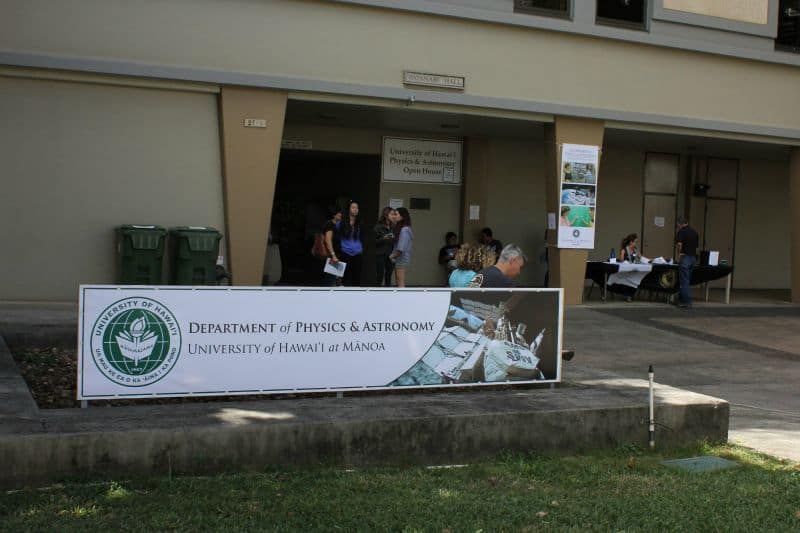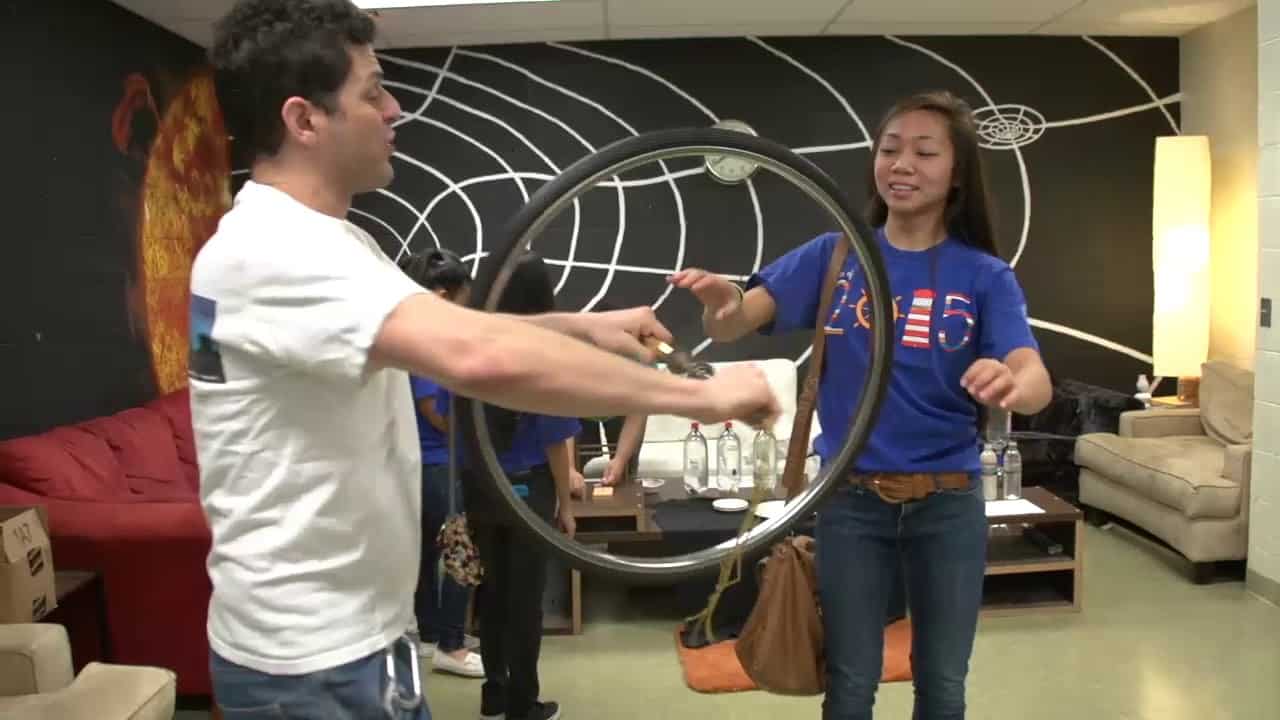Open House 2017

Watanabe Hall
2505 Correa Road
Honolulu, HI 96822
November 06, 2017
Sunday, 1 pm – 4 pm
Have you ever wondered how stars work? Or wanted to see some of the smallest objects in the universe? Do you want to look at the sun (with the approval of a scientist)? Or learn about the hunt for dark matter?
Come join the UH Manoa Department of Physics and Astronomy for a day of science-filled fun!
The Department of Physics and Astronomy is hosting an open house for visitors of all ages. Activities will include lectures, hands-on activities, demonstrations, and laboratory tours.
Programs
Neutrinos
S. Li and R. Dorill
Watanabe 323
It’s been about sixty years since the first experimental observation of neutrinos. We will discuss the main features of these elusive particles, and how to detect them.
Quantum Mechanics in Everyday Life
C. Gerrity
Watanabe 415
Ever wonder how we know what the stars are made of when we can’t collect a sample? Or how the Curiosity rover searches for evidence of liquid water on Mars? Then come learn how atoms use light to introduce themselves to us!!
Ask Me Anything (Discussion)
X. Tata
Watanabe 113
Have you been curious or puzzled about something in physics and astronomy? Drop by the AMA table to chat with Professor Tata.
Open Lab Tours
Dark Matter Lab
T. Thorpe
Watanabe 319
Dark matter is one of the biggest mysteries in physics today. We know it exists, but what is it? How can we learn more, detect it, study it?
Neutrino Lab Visit
S. Li, R. Dorill and N. Kaneshige
Watanabe 109
Demonstration of the world’s smallest neutrino detector miniTimeCube which was deployed at NIST nuclear reactor in 2016. https://www.phys.hawaii.edu/~mtc/
Demonstration of the NeutronTimeCube, new fast-timing segmented neutron camera.
Antimatter Lab
B. Crow and T. Browder
Watanabe 221
What is the difference between matter and anti-matter? What happens when they come together? How could the early universe (with equal amounts of matter and anti-matter) evolve to its current matter dominated state? This is a fundamental mystery of particle physics and cosmology.
Free Electron Laser Tour
E. Szarmes
Watanabe 102
The Mark III free-electron laser (FEL) as it was originally commission at Stanford in 1984! This FEL is used for UH Manoa research into remote sensing and advanced FEL concepts.
Hands-On
Belle II Virtual Reality
T. Browder
Watanabe 217
A virtual reality (VR) demonstration using the Oculus RIFT headset. Belle II is a particle physics detector located in Tsukuba, Japan. Electron-positron collisions are viewed inside the Belle II detector. The tracks and energy depositions as particles move, shower, and interact can be viewed in VR. This demo was developed at Virginia Tech and has been shown at events around the world.
Belle II Virtual Reality
M. Nassir and the Society of Physics Students
Watanabe 421
What do spinning ice skaters to make themselves speed up? How does a ping pong ball stay trapped in a stream of air? See the Phantom Pig! Experience tabletop demos of mechanics, fluids and electromagnetism – brought to you by the Society of Physics Students!
Solar Telescopes
A. Dvornikov and R. Prechelt
Watanabe Courtyard
Come look at the surface of the sun with a filtered telescope!! Feel free to get a picture with your phone and ask a physicist about the inner workings of our nearest star!

